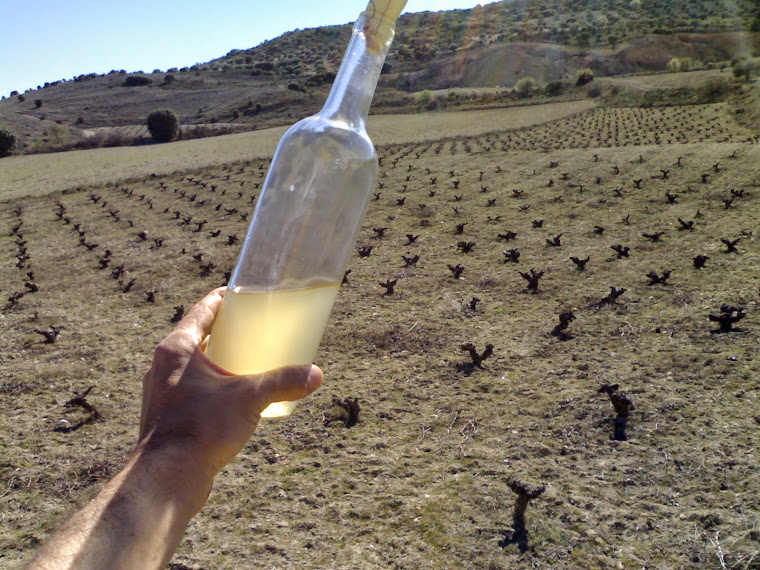January is already
drawing to a close, and I'm focusing on three different aspects of my
mini-wine-business: in the vineyards, pruning, removing the canes,
hoeing up around the vines, and other miscellaneous activites like cutting grass, fixings drainage channels, and fences, and generally tidying up; in the bodega, bottling up older vintages from barrels, and filling said barrels
with new vintages; and on the home front, writing a HACCP (pronounced
"HAZOP"), ie a food safety management plan! Amongst other things. But enough of that! Here's my latest news from the mountains:
In the Vineyard
The other day I was in
my other Garnacha vineyard in El Tiemblo (Sierra de Gredos), having completely
finished pruning the first (rock rose infested) Granacha vineyard that I wrote
about in my previous post. Actually, I still have to finish raking up pine
needles and checking and fixing the perimiter fence, but those tasks I have
relegated to a lower priority, to be done 'some other time'!
So I spent the whole
day here in this vineyard, but in a terribly inefficient manner - I only did 5
rows of about 10 vines. But I did them absolutely beautifully! More like
gardening, rather than agricultural labour! I did it this way for a few
reasons:
1. The vineyard now
looks really beautiful as seen from the gate, so that keeps the owner and
neighbours off my back - no more comments on how bad the vineyard look, etc,
etc! I'm used to it by now and I pay no
attention, but it's still annoying!
2. A whole day's
exclusive pruning is sore on the back muscles, so it's better to do a whole
range of different activities that use different muscles
3. It was great fun and
immensely satisfying to make such a beautiful 'garden' in the vineyard!
Here's some photos:
Here's some photos:
 |
| Natural State |
 |
| First Rows |
Then I even raked up all the dead grass between the rows! I don't think there's any good agricultural reason for doing that, but what the hell? I felt like doing it, and the result look quite nice, no? It will be interesting to see if there are any consequences. For example, all the new grass might grow better now that there are no dead leaves and grass in their way. Maybe this spring these first few rows will be overwhelmed by new grass? Has my intervention upset the balance?
 |
| Close-up |
 |
| Worm |
Healthy balanced soil is very important, because vines can extract from it all the nutrients they need, neither too much not too little, but the perfect amount of each nutrient and micro-nutrient. Industrial-chemically farmed vines produce unbalanced faulty grapes because the soil they live in is biologically dead - it's just a substance that holds the vines upright, and which has an excessive over-abundance of some nutrients and a complete lack of others. There's no way possible to make a complex, interesting, terroir-expressing wine with grapes from that quality of soil. (Enough ranting already - Ed.)
A piece of bad news and
really annoying too, is that 'someone' (I'm guessing the owner) took it upon
themselves to prune the vines that I had deliberately allowed to climb up the
various trees growning in the vineyard. This was so I could make a tiny
experimental batch of 'Roman' wine. I haven't spoken to the owner about it yet
- I'm letting time pass so I won't be so upset and angry when I do bring the
subject up.
The Romans had three
systems of grapegrowing: trellised and bush vines which we inherited from them,
and also a third method which consisted of letting the vines grow up trees,
which we have lost today. Pliny and Columella write about it at length here and
here, respectively.
I hope to finish pruning this vineyard soon and make a start on my third, newly acquired, Chelva
vineyard here in El Tiemblo.
That just leaves the
Carabaña (Airén/Tempranillo) and Villarejo (Malvar) vineyards, but they have
interesting issues/complications, ... which is another story!
I've also done some work in the bodega and at my computer, but I'll leave that for another post and another day.















